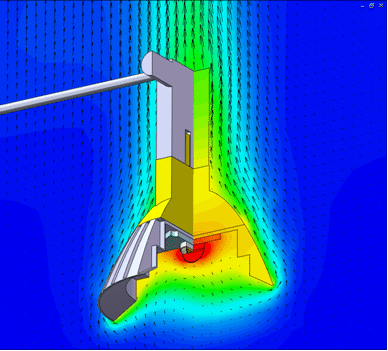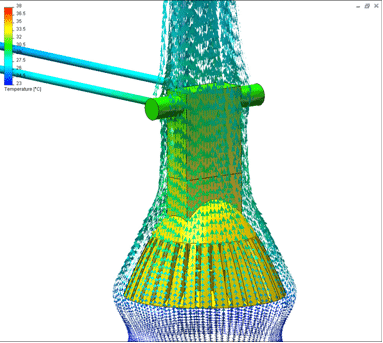Thermal management of LEDs (Light Emitting Diodes) is an important application for CFD software, which is helping designers use LEDs for high-power lighting applications. However, LEDs are changing our lives in so many more ways than simply providing more energy efficient or more aesthetic lighting solutions.
Last year I posted about a light therapy device that desensitizes the nasal passages, inhibiting the allergic reaction and reducing irritation caused by hayfever – something I suffer from for a couple of months of the year, so I can confirm that it really works. Since then I’ve also come across a treatment for cold sores, using 1072 nm narrow waveband light, which interestingly enough corresponds to the peak light emission wavelength of a water molecule. The research was published back in 2001 in The Journal of Clinical and Experimental Dermatology and now appears to have been approved for prescription by the UK’s National Health Service.
I’ve even seen claims that the same wavelength of light helps protect cells against the adverse effects of ultraviolet light and even reverse the effects of photo-aging! What really got my attention was the following article from the BBC: New skin cancer treatment may reduce hospital time. Ambulight PDT is a light-emitting sticking plaster for the treatment of non-melanoma skin cancer. It works in 3 stages. First, a gel containing a photosensitive drug is applied. This is then absorbed only by the cancer cells. Finally, following absorption the gel is activated using incorporating OLED (Organic Light Emitting Diode) and LED technologies. So, given it can be used to kill skin cancer, the most common cancer in humans, maybe light therapy offering a way to stop aging isn’t so far fetched.
Mentor has its own story to tell regarding LEDs as we help companies around the world adopt LEDs in place of conventional lighting by providing a complete set of tools for the thermal design and physical (combined thermal and optical) characterization of LED light assemblies, ensuring that they can be kept sufficiently cool to deliver high light output and long life. Here’s a couple of images showing the results of a study of a simple LED fixture in natural convection, but we cover everything from this to high-power applications like car headlights.

Temperatures on a 2-D slice through the center of the lamp with vectors showing flow caused by natural convection over the outside of the lamp.
- Particle tracks over the lamp, mounted horizontally facing downwards, showing how the natural convection causes the air to flow smoothly over the exterior of the lamp housing. The thermal plume contracts as the flow accelerates above the lamp. Note that thermal conduction through the connector and arms contribute to the cooling of the device
Dr J, Hampton Court







